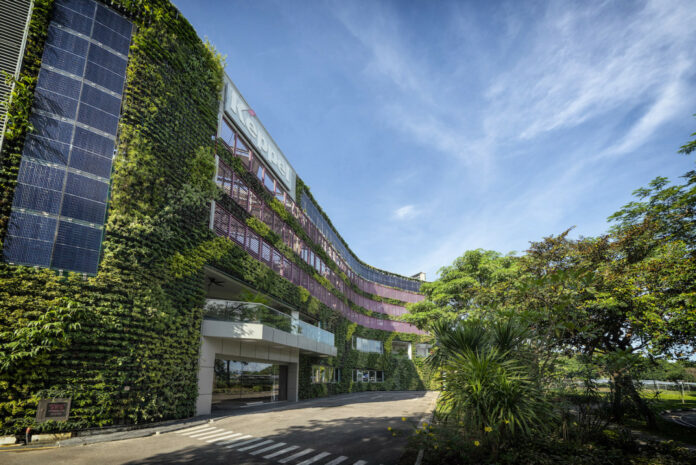A positive energy building is “an energy-efficient building that produces more energy than it uses via renewable sources. A high-quality indoor environment is an essential element in the PEB, maintaining the building occupants’ comfort and well-being. It is being adopted across the globe to minimise the amount of energy they need to function while maximising the amount of clean, renewable energy they produce. They do this through a unique combination of sustainable design, engineering, and construction practices. In this regard, Home-grown engineering and construction firm Samwoh opened its new headquarters in Kranji, Singapore featuring the nation’s first positive-energy industrial building.
Deputy Prime Minister Heng Swee Keat was guest of honour at the opening of the Kranji headquarters, which consolidated all of Samwoh’s operations. Noting the urgency of focusing on sustainability, Mr Heng said: “Much more needs to be done, especially in the built environment sector. Buildings account for around 40 per cent of global carbon emissions, of which around a third are attributable to building materials and construction. “Samwoh’s focus on sustainability is most salient, as we seek to galvanise greater momentum for a more climate-friendly built environment industry”, he further said.
Features of positive-energy industrial building
- The hub has a floor area of 15,569 sq m and sits on a 35,000 sq m plot of land.
- The building generates more energy than it uses. At least 25 per cent of the electricity generated by the Samwoh Smart Hub’s 2,588 solar panels will be returned to the national grid.
- Efficient asphalt production plant has also been built beside the hub. It is 15 per cent more energy-efficient than a conventional asphalt production plant – with the energy savings equivalent to taking 265 cars off roads annually.
- The energy consumption of the building is kept to a minimum through numerous smart building management systems, such as the extensive use of sensors to optimise the temperature and humidity inside the four-storey structure.
- It is among the few buildings in Singapore to attain the Building and Construction Authority’s Green Mark Platinum Positive Energy certification.
Home-grown engineering and construction firm Samwoh constructed the hub with various types of recycled construction materials, and a portion of the hub was made with sedimentary rock – traditionally not used for buildings – from the Jurong Rock Caverns instead of granite, which is imported into the Republic.
But sedimentary rocks are considered weaker than granite. They are formed on or near the earth’s surface, in contrast to metamorphic and igneous rocks formed deep within the planet. Granite is a type of igneous rock that is typically used as structural concrete in buildings.
Into its third year of testing, the part of the building built with sedimentary rock acts as a litmus test to determine whether this material is a safe and feasible alternative to granite. The structural health of the building will be monitored for a few years via fibre optic sensors embedded in the columns.
So far, test results have shown that the building is structurally safe.
“The Smart Hub shows our focus towards sustainability, innovation and the use of digital tools to optimise processes,” Mr Soh, Samwoh chief executive said. “It is an exciting place, with a huge number of projects that our talented scientists and engineers can work on.”
The company is expanding its existing digital applications into a cloud-based tracking system so information and data can be analysed and viewed in real time and from anywhere, thereby increasing the efficiency of operations.



